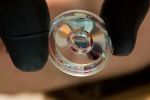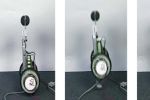These "surfboards" make surface-mount prototyping "boardacious," dude
If you've done a fair amount of electronics circuit building, then you probably dread prototyping. You know prototyping: that point where you take your "perfect" circuit design from paper and transfer it to an initial hardware mockup. Typically, you have three basic choices in this matter, each with its own problem.
Your first choice in circuit prototyping is to lay out your design on a modular breadboard. The strongest virtue of this choice is the elimination of soldering -- all connections are built into the breadboard. Unfortunately, breadboards are bulky and unable to handle surface-mount device (SMD) designs.
Following closely on the heels of breadboard prototyping, your second choice is perfboard layout. Once again, most perfboards are unable to accommodate SMD circuit designs. Plus, the point-to-point wiring needed for connecting the components can be a daunting task.
Which leads us to your final choice for circuit prototyping: custom printed circuit board (PCB) fabrication. Whether you roll your own PCB with DIY masks and etch kits, or hire a fab house to create a custom PCB, time will be your enemy. Fab houses can take upwards of one month for delivery of a finished board (unless you're willing to pay extra for faster service), and making your own PCB can be fraught with frustrating failures and delays which can take days to weeks to solve.
[
Read Full Story ]








